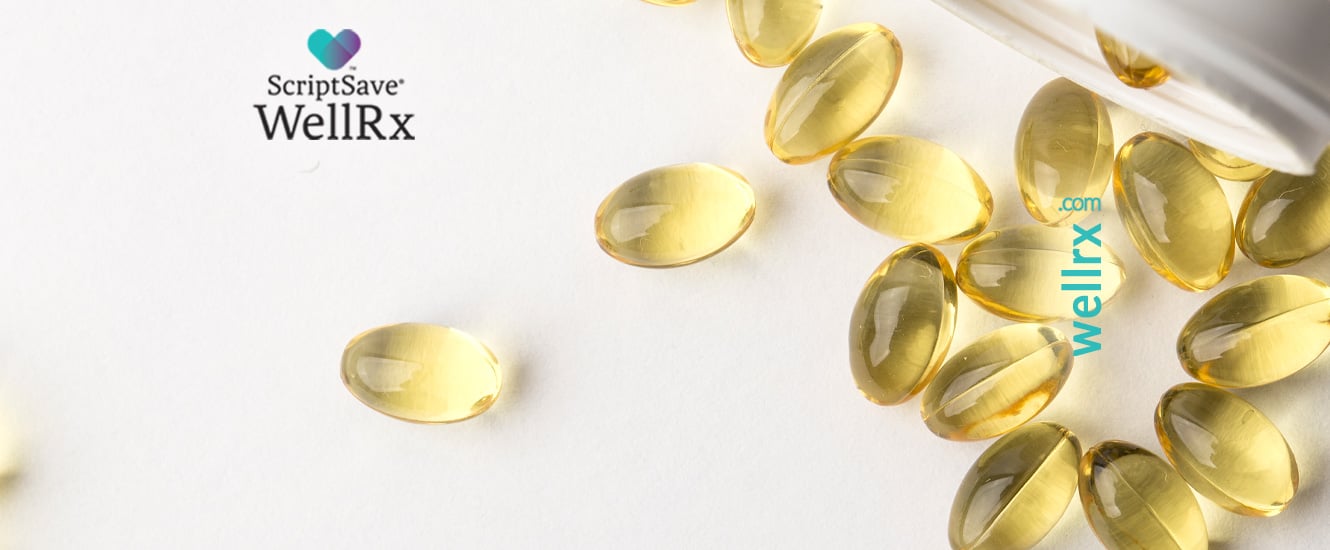Vitamin D—the “sunshine” vitamin—is recognized as one of the most beneficial vitamins for our cellular function. Did you know the UK provided all vulnerable citizens a bottle of Vitamin D this winter? That is pretty good proof of its importance.
Many doctors and nutritionists argue that vitamin D is the single MOST important vitamin to supplement. Here are just some of the benefits the sunshine vitamin offers:
Who Is at Risk for Vitamin D Deficiency?
Most people are at risk for Vitamin D insufficiency, especially during the winter months. Here is a list of people who have increased risk:
- Infants exclusively breastfed (the American Academy of Pediatrics recommends that all breastfed babies receive 400 IU of Vitamin D3 daily)
- Those with darker pigmented skin
- Those with limited sun exposure on the skin (due to sunscreen and clothing)
- Those with eczema, asthma, or allergies
- Those with focus concerns, anxiety, depression, or mood volatility
- Those with autoimmune illness
- Those who are taking certain medications (including topical, inhaled, and intranasal steroids; seizure medications; antifungal medications; and antiretroviral medications)
- Those with bone pain or bone soreness
- Those with a history of fracture
Diagnosing Vitamin D Deficiency
Vitamin D status can be assessed through blood 25-hydroxy-Vitamin D levels, 25(OH)D. This lab should be done as part of routine lab work no matter the time of year. Of course, the value is likely to be significantly lower over the winter. But many people remain deficient in the summer months.
Optimal Vitamin D Levels
Most labs report “normal” levels of 25(OH)D as a rather wide reference range of 30 ng/ml to 100 ng/ml (or 50 nmol/l to 250 nmol/l). The United States measures Vitamin D in nanograms per milliliter (ng/ml) while most other countries use nanomoles per liter (nmol/l). To convert from ng/ml to nmol/l, use this formula: 1 ng/ml = 2.5 nmol/l.
Most medical providers would agree that Vitamin D below 30 ng/ml is deficient. The level considered sufficient or even optimal varies widely, and likely depends on many factors, including age, gender, race/ethnicity, weight, and underlying health status.
The National Health and Nutrition Examination Survey (NHANES) defines Vitamin D deficiency and insufficiency as follows:
- Vitamin D deficiency: 25(OH)D levels <15 ng/ml
- Vitamin D insufficiency: 25(OH)D levels 15-29 ng/ml
An NHANES study between 2001–2004 found that 9% of all children aged 1-21 years had Vitamin D deficiency, and 61% had Vitamin D insufficiency. That’s nearly 3 out of 4 U.S. children (58.4 million children) with inadequate Vitamin D levels, with many more children likely having suboptimal Vitamin D levels.
Most functional and holistic medicine doctors helping to optimize vitamin levels for best cellular function aim for Vitamin D levels in the range of 60–90 ng/ml.
The Sunshine Vitamin—Can the Sun Really Give Us Enough Vitamin D?
Ultraviolet-B (UVB) radiation from the sun at wavelengths of 290–315 nm is the main non-dietary source of Vitamin D. With UVB exposure, the skin converts 7-dehydrocholesterol to pre-vitamin D3, which then gets converted to 25-hydroxyvitamin D in the liver and subsequently to 1,25-dihydroxyvitamin D in the kidneys.
Most people will not get sufficient Vitamin D levels from sunshine alone, for many reasons:
- The further away from the equator we live, the weaker the sun’s ability to convert Vitamin D through our skin in any season except the summer (that’s most of the Northern Hemisphere, like here in the United States).
- The darker our skin, the less potential we have to synthesize Vitamin D due to increased levels of melanin—a protective pigment that blocks UV radiation from the sun.
- Pollution blocks UVB from reaching our skin, so don’t count on those Spare the Air Days for skin conversion.
- The current recommendation of 10–20 minutes daily of sun exposure during the summer months does NOT adequately boost overall 25(OH)D levels. In fact, the amount of sun exposure required to achieve sufficient levels would likely “compromise skin health.”
Vitamin D Food Sources
As much as food can be medicinal, not many foods provide an adequate amount of Vitamin D. Foods highest in Vitamin D include:
- Cod liver oil [1 tablespoon (15 ml) – provides up to 1,360 IU of Vitamin D]
- Salmon and other fatty fish like trout and mackerel (3 ounces – provides up to 650 IU)
- Sardines (1.7 ounces – provides up to 250 IU of Vitamin D)
- Shrimp (5 large – provides up to 200 IU of Vitamin D)
- Eggs (1 large – provides up to 44 IU of Vitamin D)
- Caviar (1 tablespoon – provides up to 37 IU of Vitamin D)
- Liver (3 ounces – provides up to 42 IU of Vitamin D)
- Cow’s milk (8 ounces – provides up to 120 IU of Vitamin D)
- Cheese (1 ounce – provides up to 12 IU of Vitamin D)
Cholecalciferol Vitamin D Supplements Are Usually Needed—But How Much?
When supplementing Vitamin D, use Vitamin D3 (cholecalciferol) rather than Vitamin D2 (ergocalciferol). Vitamin D3 is the form made by your skin when exposed to sunlight and has been shown clinically to be more effective than Vitamin D2.
The Institute of Medicine notes the Tolerable Upper Intake Level (UL) of Vitamin D to be 4000 IU for teenagers and adults, with lower levels noted for infants and children. For the average adult, a daily intake of 4,000 IU of Vitamin D corresponds to a mean 25(OH)D level of about 50 ng/ml (125 nmol/L).
As always, check with your physician before starting any dietary supplements. While Vitamin D toxicity is extremely rare, increased risk for toxicity may exist with obesity, chronic kidney disease, and certain genetic disorders. Administration of Vitamin D3 20,000 IU daily for at least one year in healthy adult males did not reach toxic levels25(OH) levels >100 ng/ml.
The Endocrine Society has evidence-based recommendations in their Clinical Practice Guidelines for the Evaluation, Treatment, and Prevention of Vitamin D Deficiency. They state the Tolerable Upper Limits of dosing when there is a known deficiency to be:
- Infants up to 6 months: 1,000 IU/day
- Infants 6 months to 1 yr: 1,500 IU/day
- Children 1-3 years: at least 2,500 IU/day
- Children 4-8 years: 3,000 IU/day
- Everyone over 8 years: 4,000 IU/day
The Endocrine Society further notes that “higher levels of 2,000 IU/[day] for children 0–1 year, 4,000 IU/[day] for children 1–18 years, and 10,000 IU/[day] for children and adults 19 years and older may be needed to correct vitamin D deficiency.”
When you do not have access to 25(OH)D testing for you or your child, the following are likely safe dosages by age:
- 0–1 year: 400–600 IU daily
- 1–6 years: 1,000 IU daily
- 7–12 years: 2,000–3,000 IU daily
- 13–18 years: 3,000–4,000 IU daily
- 19+ years: 4,000–5,000 IU daily
Choosing a Cholecalciferol Vitamin D3 Supplement
Providing Vitamin D could be one of the most important public health priorities of our time. So, why not take the initiative to improve your health with this rich vitamin? You can get your Cholecalciferol Vitamin D3 at the right dose for you with ScriptSave WellRx.
More on Vitamin D3:
Should You Be Taking Vitamin D?
Vitamin D2 vs. D3: What Is the Difference, and Which Is Better?
Do You Need Vitamin D? And What’s the Difference Between D2 and D3?
Cholecalciferol Vitamin D3 Dosage
Vitamin D3 Drug Facts
Dr. Nicole Craven, MD, completed her Pediatric Residency at the Medical University of South Carolina in Charleston, and her Integrative Medicine Fellowship in Tucson, AZ with Dr. Andrew Weil. As an integrative medicine doctor, pediatrician, and previous practice owner, Dr. Craven also devotes time to scientific writing, copywriting, marketing for natural health and medicine companies, speaking, and consulting.
References:
https://www.bbc.com/news/health-55108613
https://pubmed.ncbi.nlm.nih.gov/28202713/
https://pubmed.ncbi.nlm.nih.gov/26680471/
https://pubmed.ncbi.nlm.nih.gov/30275418/
https://pubmed.ncbi.nlm.nih.gov/27147283/
https://www.health.harvard.edu/staying-healthy/time-for-more-vitamin-d
https://pubmed.ncbi.nlm.nih.gov/20163416/
https://pubmed.ncbi.nlm.nih.gov/32180081/
https://pubmed.ncbi.nlm.nih.gov/25372709/
https://pubmed.ncbi.nlm.nih.gov/21646368/













 Store & manage your medication list
Store & manage your medication list Medication pricing updates
Medication pricing updates Pill & refill reminders
Pill & refill reminders Medication journal & mood log
Medication journal & mood log